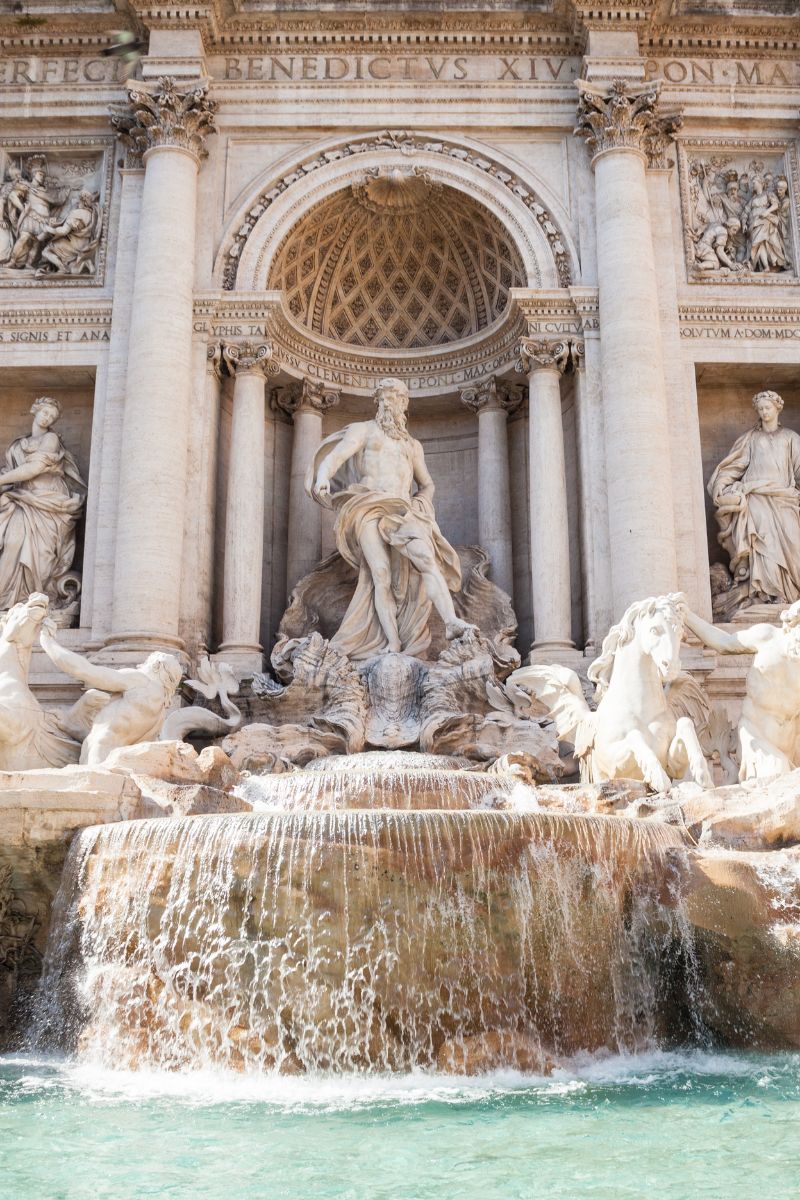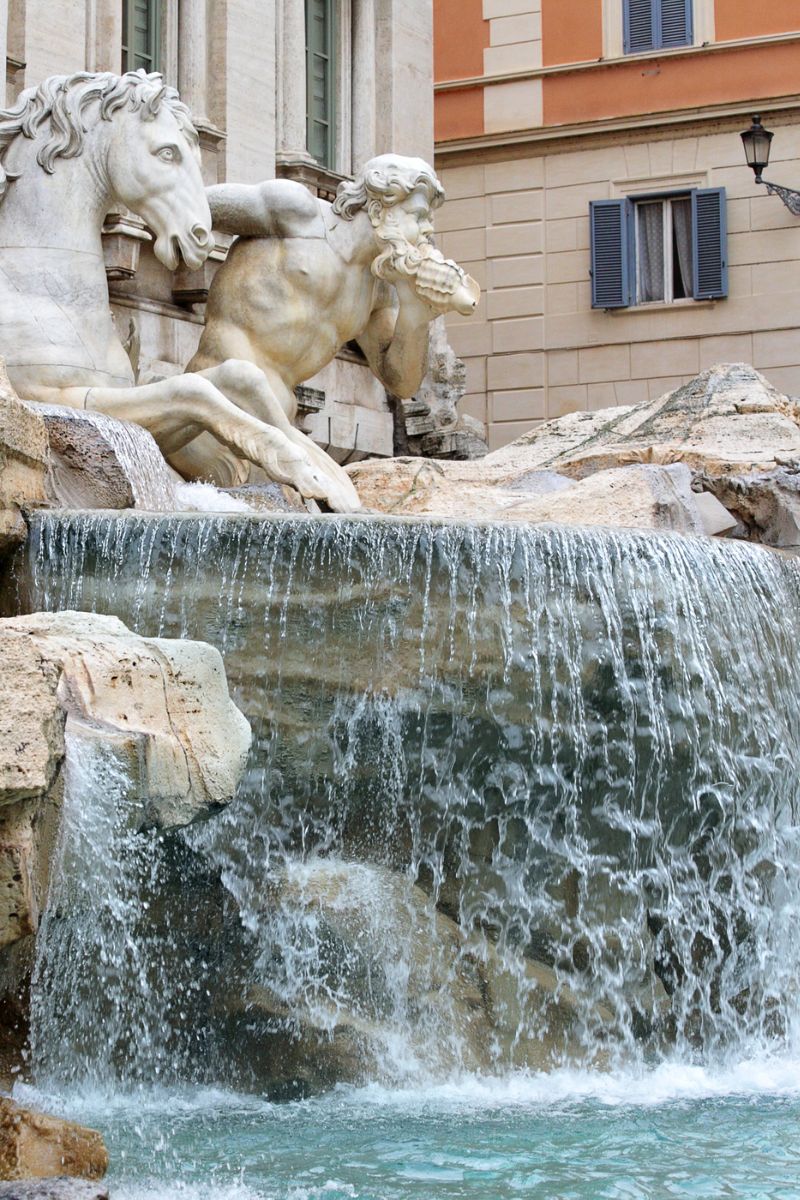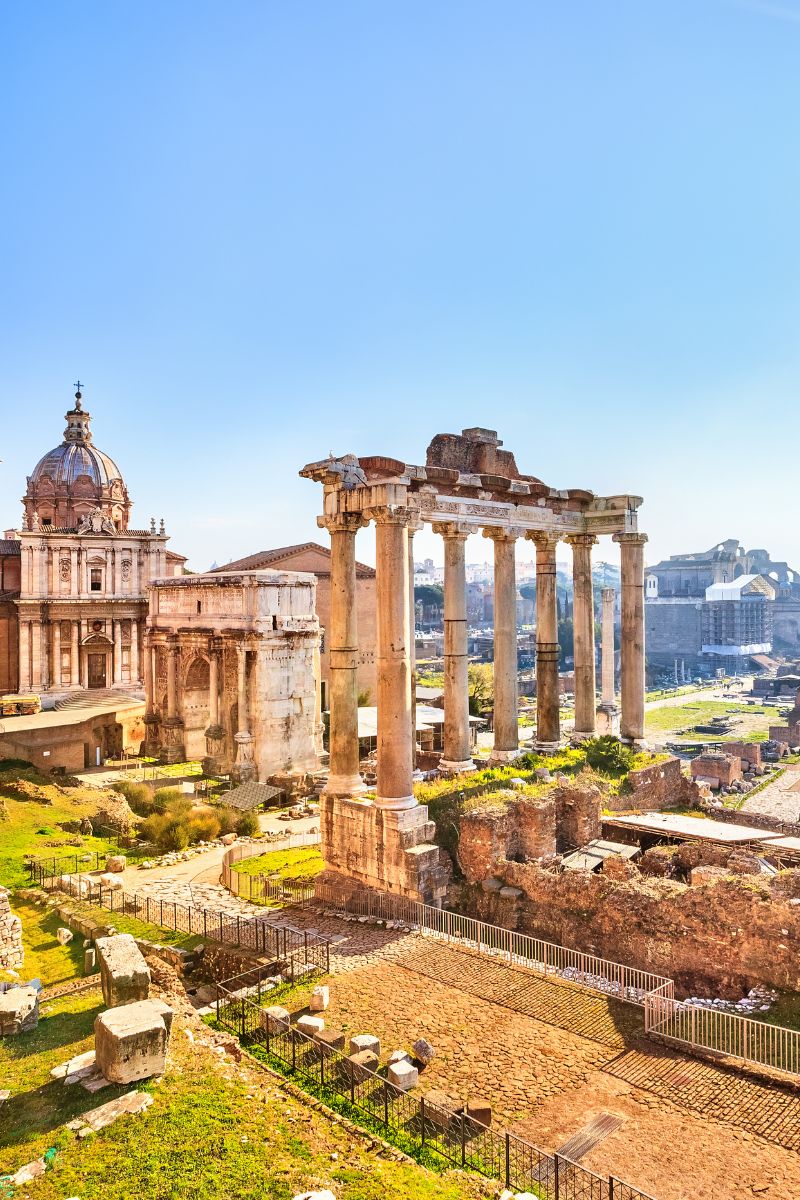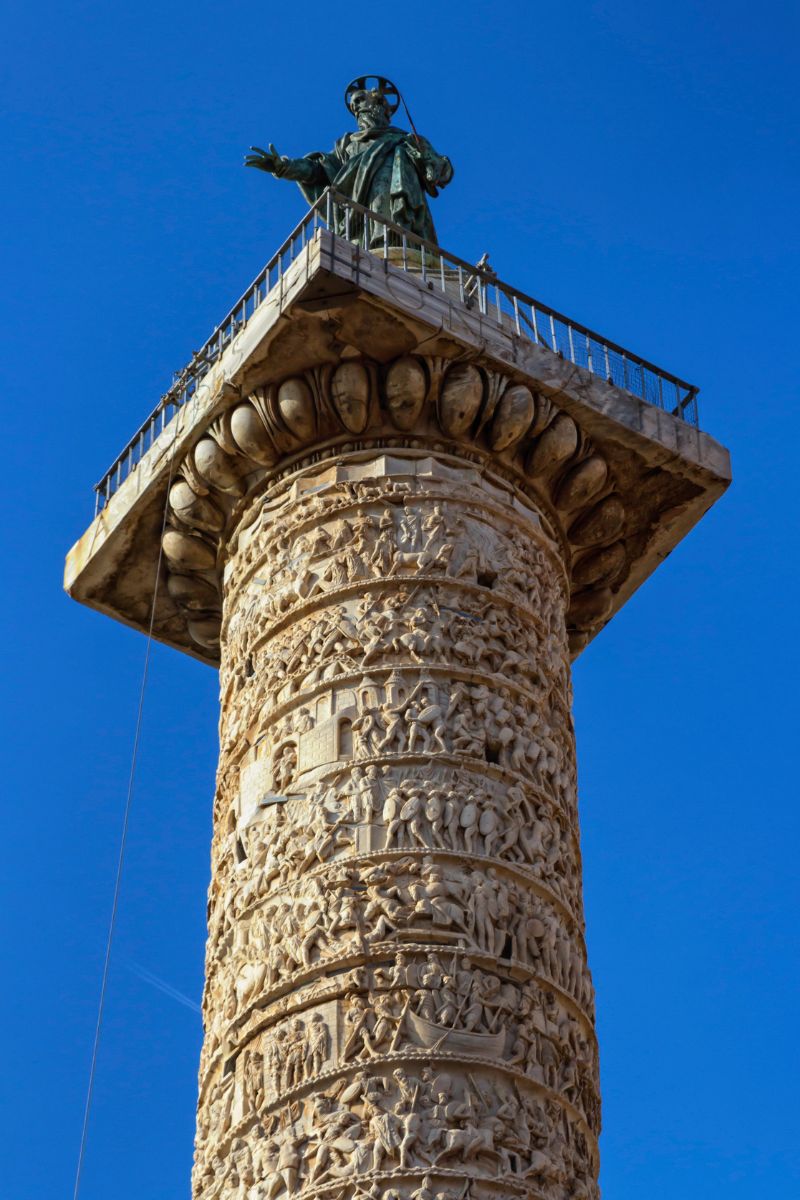
Trevi Fountain, an iconic masterpiece nestled in the heart of Rome, stands as a testament to the city’s rich history and architectural grandeur. With its intricate design, historical significance, and timeless allure, the Trevi Fountain has captivated visitors from around the world. Let’s delve into the fascinating history and captivating details of this magnificent monument.
As you stand before the Trevi Fountain, the sheer grandeur of the monument and its intricate details leave an indelible impression. It’s a place where history, art, and culture converge, inviting you to be a part of its story. So, whether you’re tossing a coin for good luck or simply marveling at its beauty, the Trevi Fountain stands as a testament to the eternal allure of Rome.
If you want to take beautiful pictures before hordes of tourists arrive you have to get up at 5am and sometimes even earlier than that in the summer months when it gets light early in the morning. We have covered some amazing Airbnbs in Rome that overlook the Trevi fountain.


CONTENTS
- 1 History of The Trevi Fountain
- 2 Where Does The Water In The Fountain Come From?
- 3 The History of Throwing Coins in The Fountain
- 4 Things You Are Not Allowed To Do In The Trevi Fountain
- 5 Trevi Fountain Opening Hours
- 6 How To Get To Trevi Fountain
- 7 The Best Time To Visit The Fountain
- 8 Places To Eat Near Trevi Fountain
- 9 Things To Do Near Trevi Fountain
- 10 FAQs
History of The Trevi Fountain
The Trevi Fountain’s history traces back to the 18th century when Pope Clement XII commissioned its creation. Designed by Italian architect Nicola Salvi, the fountain’s construction was completed in 1762.
The fountain is a stunning amalgamation of Baroque and Neoclassical styles, featuring intricate sculptures depicting Oceanus, the god of the sea, and his aquatic companions.
Where Does The Water In The Fountain Come From?
The source of the water that graces the Trevi Fountain is an ancient aqueduct called Aqua Virgo. This aqueduct has been supplying Rome with fresh water for centuries, showcasing the ingenuity of Roman engineering.
The aqueduct spans approximately 14 miles, bringing water from the Salone Springs to the heart of the city, culminating in the enchanting display at the Trevi Fountain.

The History of Throwing Coins in The Fountain
One of the most famous and enduring traditions associated with the Trevi Fountain is the act of throwing coins into its waters. Legend has it that if you toss a coin over your left shoulder using your right hand, you ensure a return trip to Rome.
Two coins guarantee a return and a new romance, while three coins ensure a return, new romance, and marriage. This tradition not only adds to the allure of the fountain but also supports various charitable causes, as the coins are collected and donated to those in need.
Things You Are Not Allowed To Do In The Trevi Fountain
While the Trevi Fountain is a symbol of joy and wonder, there are certain rules and etiquette to follow while visiting. Climbing on the fountain, wading in the waters, or sitting on the edge is strictly prohibited. Respect for this historic monument ensures that it remains a cherished destination for generations to come.

Trevi Fountain Opening Hours
The Trevi Fountain is open to visitors throughout the day and night, offering an enchanting experience whether under the bright sun or the twinkling stars. Its accessibility adds to the magical atmosphere that surrounds it.
How To Get To Trevi Fountain
Situated in the Quirinale district, reaching the Trevi Fountain is convenient. Visitors can explore the area on foot or take a short taxi or bus ride. Rome’s efficient public transportation system also makes it easy to access this iconic site.
The Best Time To Visit The Fountain
The Trevi Fountain exudes a distinct charm during different times of the day. Early mornings provide a serene atmosphere, while evenings offer a romantic ambiance illuminated by lights. To truly appreciate the fountain’s beauty without the crowds, visiting during the weekdays is recommended.

Places To Eat Near Trevi Fountain
Exploring the area around the Trevi Fountain offers a culinary delight. From traditional Italian trattorias to modern cafes, you’ll find an array of dining options. Indulge in authentic Roman flavors and enjoy the picturesque surroundings.

Things To Do Near Trevi Fountain
The Trevi Fountain’s central location makes it a perfect starting point to explore nearby attractions. Some notable places to visit include:
Spanish Steps
Just a short stroll away, the Spanish Steps provide a picturesque setting for relaxation and people-watching. This architectural marvel provides a picturesque setting for people-watching and relaxation. The steps lead to the Trinità dei Monti church, offering panoramic views of the city.


Fontana del Tritone
Another captivating sight nearby is the Fontana del Tritone. This stunning fountain features Triton, the god of the sea, surrounded by dolphins. The artistic design and tranquil ambiance make it a hidden gem worth discovering. It’s a perfect example of Baroque artistry.
Roman Forum
Immerse yourself in ancient Roman history by visiting the Roman Forum. This is where the remnants of once-magnificent structures stand as a testament to the glory of the Roman Empire. Walk among the ruins of ancient temples, arches, and public spaces that once defined the heart of the Roman Empire.


Galerie Sciarra
Art enthusiasts will appreciate the Galerie Sciarra, an elegant palace known for its beautiful Art Nouveau architecture and intricate murals.
Piazza Navona, a lively square near the Trevi Fountain, boasts impressive Baroque architecture and exquisite fountains. Experience the vibrancy of Rome at Piazza Navona, adorned with ornate fountains, bustling cafes, and lively street performances.



Fontana della Barcaccia
The Fontana della Barcaccia, located at the foot of the Spanish Steps, is a whimsical fountain that resembles a sinking boat. This charming fountain shaped like a sinking boat is a unique and whimsical sight. Its unique design adds character to the surrounding area.


Trajan’s Column
For history buffs, Trajan’s Column offers a glimpse into ancient Roman victories. Marvel at the intricately carved Trajan’s Column, a historical monument commemorating Emperor Trajan’s victory in the Dacian Wars.


Le Domus Romane di Palazzo Valentini
Step beneath Palazzo Valentini to discover the well-preserved ruins of ancient Roman houses. With innovative multimedia displays, this attraction offers a vivid portrayal of daily life in ancient times. Discover the ancient Roman houses beneath Palazzo Valentini through an immersive multimedia experience that brings history to life.
Doria Pamphili Gallery
Art connoisseurs will relish the Doria Pamphili Gallery, housing an impressive collection of Renaissance and Baroque masterpieces. The opulent setting adds to the allure of the art on display.
FAQs
- What is the significance of throwing coins into the Trevi Fountain?
- Tossing coins into the Trevi Fountain is believed to ensure a return trip to Rome and even bring luck in matters of the heart.
- Is there an ideal time to visit the Trevi Fountain?
- While the fountain is enchanting at any time, visiting early mornings or weekdays can offer a more serene experience.
- Can you swim in the Trevi Fountain?
- No, swimming or wading in the Trevi Fountain is strictly prohibited to preserve its historical and cultural value.
- Are there any nearby attractions to explore?
- Absolutely! The Trevi Fountain’s vicinity is rich in attractions like the Spanish Steps, Roman Forum, and Piazza Navona.
- What’s the history behind Aqua Virgo, the source of the fountain’s water?
- Aqua Virgo is an ancient aqueduct that has supplied Rome with water for centuries, showcasing the remarkable engineering skills of the Romans.

Leave a Reply